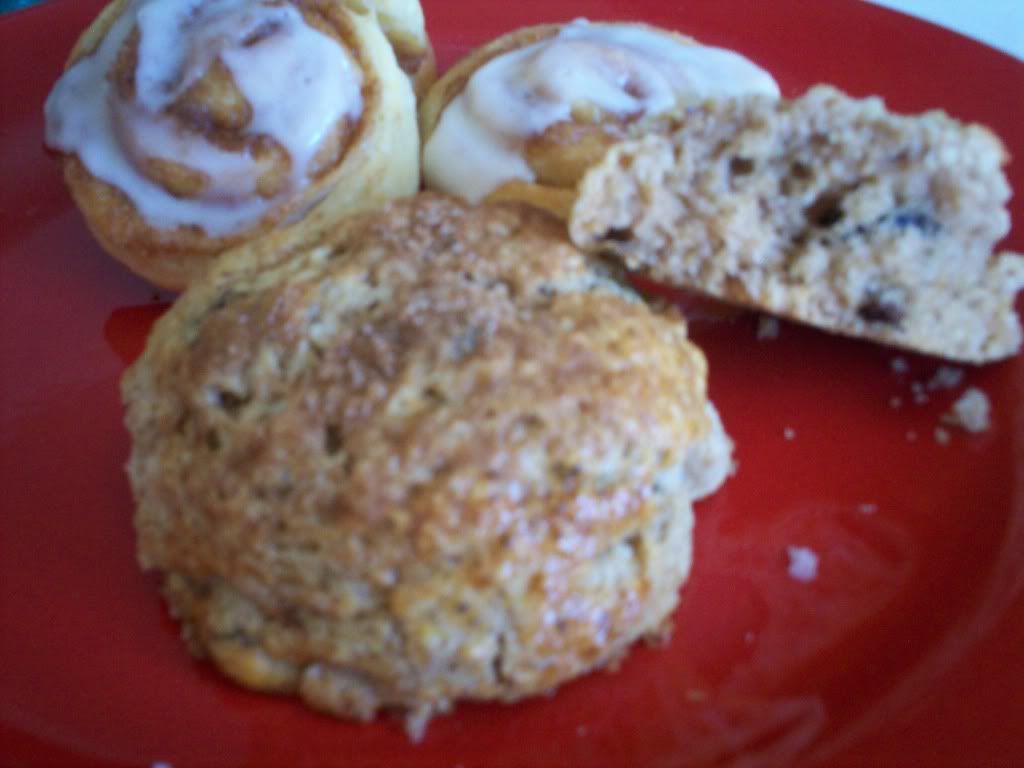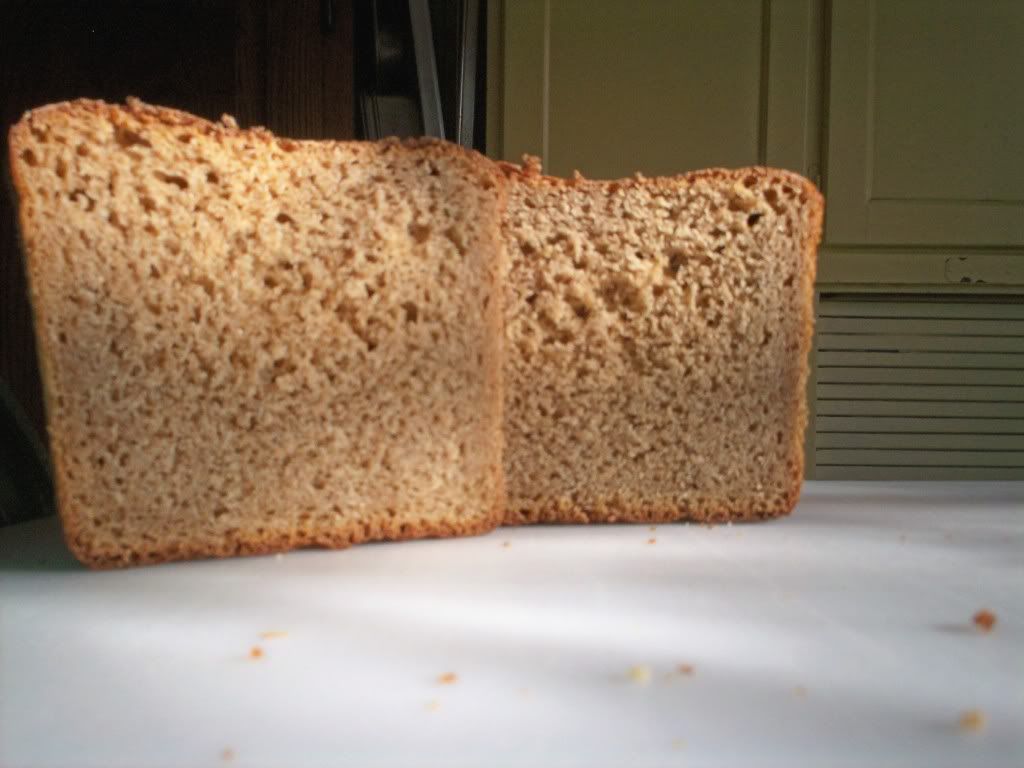As the few of you who read my posts know, 2011 was the year when I wanted to concentrate on formula development. But as I found myself winding up the year and looking on to the next, I thought it might be time to look through my vast collection of “vintage” recipes and pull out something from a distant and fading past.
This almost always leads me to the collection of recipes from my grandmother. Of course, at this festive time of year, I am the one tasked with baking a treat that is known only as Grandma’s Brown Christmas Cookies. While not a secret family recipe, it is not worth posting here as it involves an ingredient that is somewhat difficult to obtain (and may or may not be especially legal to have) and large numbers of tiny cookie cutters – which, frankly, are not easy to come by. No, it is my job to turn that out for the relatives until my death – when no one will make it anymore.
But, there are recipes that are more accessible to the average home baker and this year I decided to resurrect the making of “Crispy Cookie Coffeecakes.” I will reproduce the recipe as per the original (in hopes that this miracle of the “interweb” may preserve it after my inevitable demise) – and the offer my changes. So here it goes, another “don’t tell the doctor, but we’re baking PA Dutch stuff” recipe from my grandmother.
CRISPY COOKIE COFFECAKE
1 package or cake Fleischmann’s Yeast, active dry or compressed
¼ cup warm, not hot, water (cool to lukewarm for compressed yeast)
4 cups sifted flour
1 tsp salt
1 tsp grated lemon rind
1 cup (2 sticks) Blue Bonnet Margarine
2 eggs, beaten
1 cup milk scalded and cooled to lukewarm
1 cup sugar
1 tbsp cinnamon
In a small bowl, dissolve yeast in water. In a large bowl combine flour, salt, lemon rind, ¼ cup sugar. Cut in margarine with a fork. Combine eggs, milk, dissolved yeast and add to flour mixture. Combine lightly. Cover tightly. Refrigerate overnight. Divide dough in half. On a floured board roll each piece into 18” x 12” rectangles. Sprinkle with remaining sugar mixed with cinnamon. Roll up tighty beginning at the wide end. Cut each roll into 1” slices. Place cut side up on a greased baking sheet. Flatten with palm of hand. Bake at 400 degrees F. about 12 minutes.
Makes 36
My changes
Butter instead of margarine. I cut this butter into smallish cubes and kept it chilled. I did convert the flour to 4.25 oz per cup and weighed instead of measured.
I noted with great satisfaction that my grandmother dissolved – not proofed - the yeast and then used a scant 2 teaspoons of instant yeast mixed directly into the flour mixture. I used reconstituted powdered milk and increased the quantity by ¼ cup while omitting the lukewarm water.
I used a dough blender to cut in the butter.
While I was doing that, I had a flashback to blitz puff pastry. Because that was what I was making. My grandmother didn’t go into the folding process, but this was blitz puff pastry dough.
The dough is quite alarming when it goes into the refrigerator, but in the morning turned out to be a lovely, soft dough.
I rolled it out into the 12 x 18 rectangle (liberal flour is needed on the board) and then folded it in thirds and rolled it out again. I consider that future iterations might well include better folds, but I had a busy baking schedule ahead of me and I wanted to get on with it.
I goosed up the cinnamon sugar mixture by using half brown sugar. I baked on parchment paper lined half sheet pans (the cinnamon/sugar filling runs a bit, so containment is helpful.)
I had to bake the things for 17 minutes. I had a distant memory that when I used to eat these they had frosting on them, so I concocted a quick butter/vanilla/powdered sugar/milk glaze and spooned it on when they had cooled slightly.
Yum.
Now back to Sherman’s planet where I once more take up my ongoing triticale quest.
“My teacher” gave me a memorable quote something to the effect that if one is working with grains that might not be considered optimal for baking, adding enough sugar, butter, and cream will almost always move one closer to success. So I am shamelessly stealing a formula from “my teacher” and tailoring it to my own obsession – triticale
Scones
Mostly Whole GrainTriticale flour 545 grams 100%
Sugar 136 grams 25%
Baking Powder 33 grams 6%
Salt 3 grams .5%
Butter (unsalted, diced pliable soft) 136 grams 25%
Currants tossed in a little extra flour 109 grams 20%
Eggs, Large 60 grams 11%
Buttermilk 204 gram 37.5%
Heavy Cream 289 grams 53.1%
Cinnamon sugar mixture – or just sugar
In the formula above, the 60 grams is really one large egg.
The flour is about 85% extraction, sifted through a #50 mesh, with the bran milled to a powder. It’s a nice flour, not exactly silky, but much finer than standard whole grain. The original formula calls for whole wheat pastry flour, but be bold home millers – try the triticale!
And here we take a mental detour to comments made by “my teacher” – who like me grew up with the Imperial system and has not the reverence for the metric espoused by so many on these pages. Yet, because of certain extenuating circumstances, this formula had to be written in grams. There were dark mutterings about people feeling that they had to measure everything in grams to bake good bread and strange oaths about never seeing the day come to pass when a scale was needed that measured in fractions of grams. At this point, I swear, I didn’t even say anything, when my teacher looked me directly in the eye – “Yes, when you deal drugs, you need that accuracy.” For one of the very few times in my life – I had no snappy retort. You see what I endure – and yet, I am proud to call this person “my teacher.”
(BTW: for you metric enthusiasts, I’ve spent over half a century baking with pounds and ounces, I have a feeling for them. Half a pound – I know what that looks like in several different ingredients. A kilo? Beats me. When I work with people who are new to baking, I use pounds and ounces, but suggest that since they don’t have the years invested in that system that they start fresh and create their references in metric. Seems like the sensible blending of the worlds to me.)
But back to the scones.
Mix the dry ingredients and the sugar. With paddle attachment of your favorite mixer, blend in the butter until it looks like small peas. Add the currants (I actually used dried cherries, chopped up a bit), mix and then add the liquid all at once. Mix to a soft dough. I actually mixed the triticale version a bit longer than I would have mixed wheat.
Use a scoop of desired size to create rounds on parchment lined sheets (I used a standard ice cream scoop sized disher). Egg wash the tops. If desired, sprinkle with sugar or cinnamon sugar (I use the formula from Advanced Bread and Pastry) and bake either in convection or standard oven at 350F for 13 – 18 minutes.
Also, yum. I’ve baked this formula with wheat and the triticale texture is very, very similar. They are very delicate scones in either medium and do with some cooling before they can be eaten without excessive crumbling.
And so, as promised, a picture:

Happy Baking!
Pat











